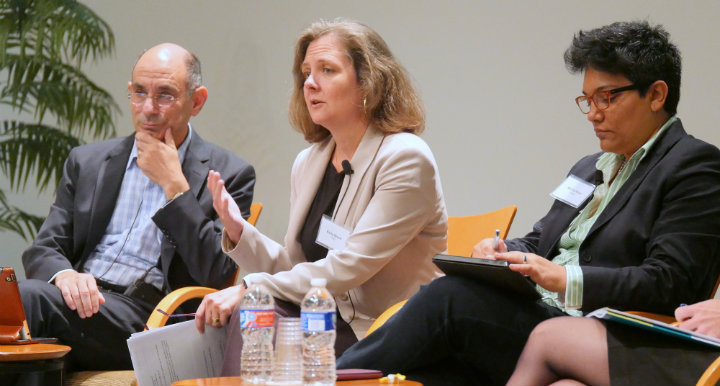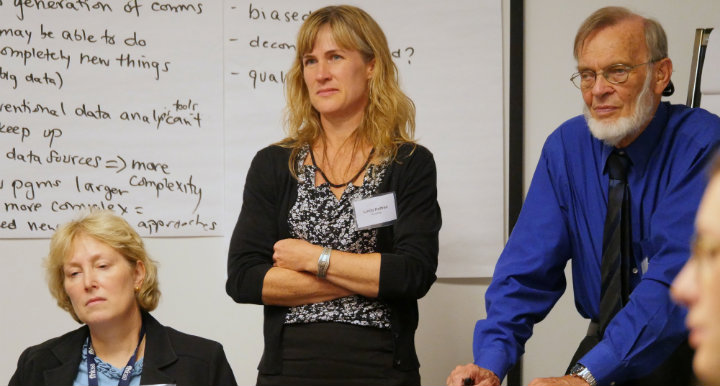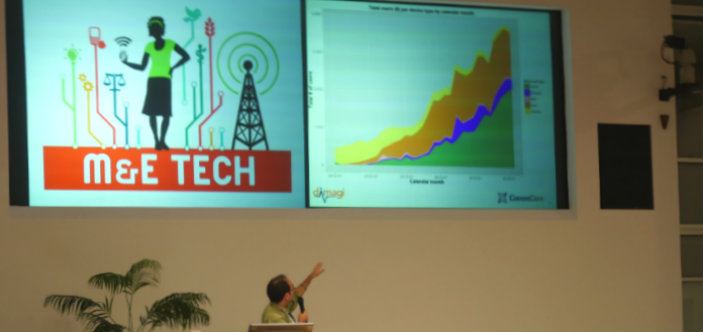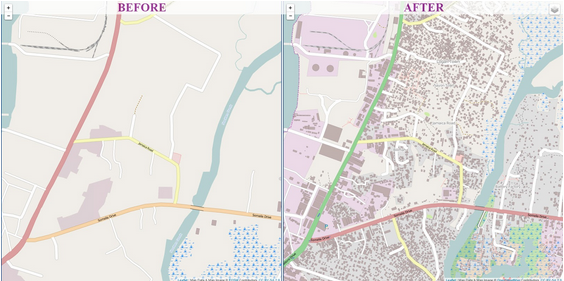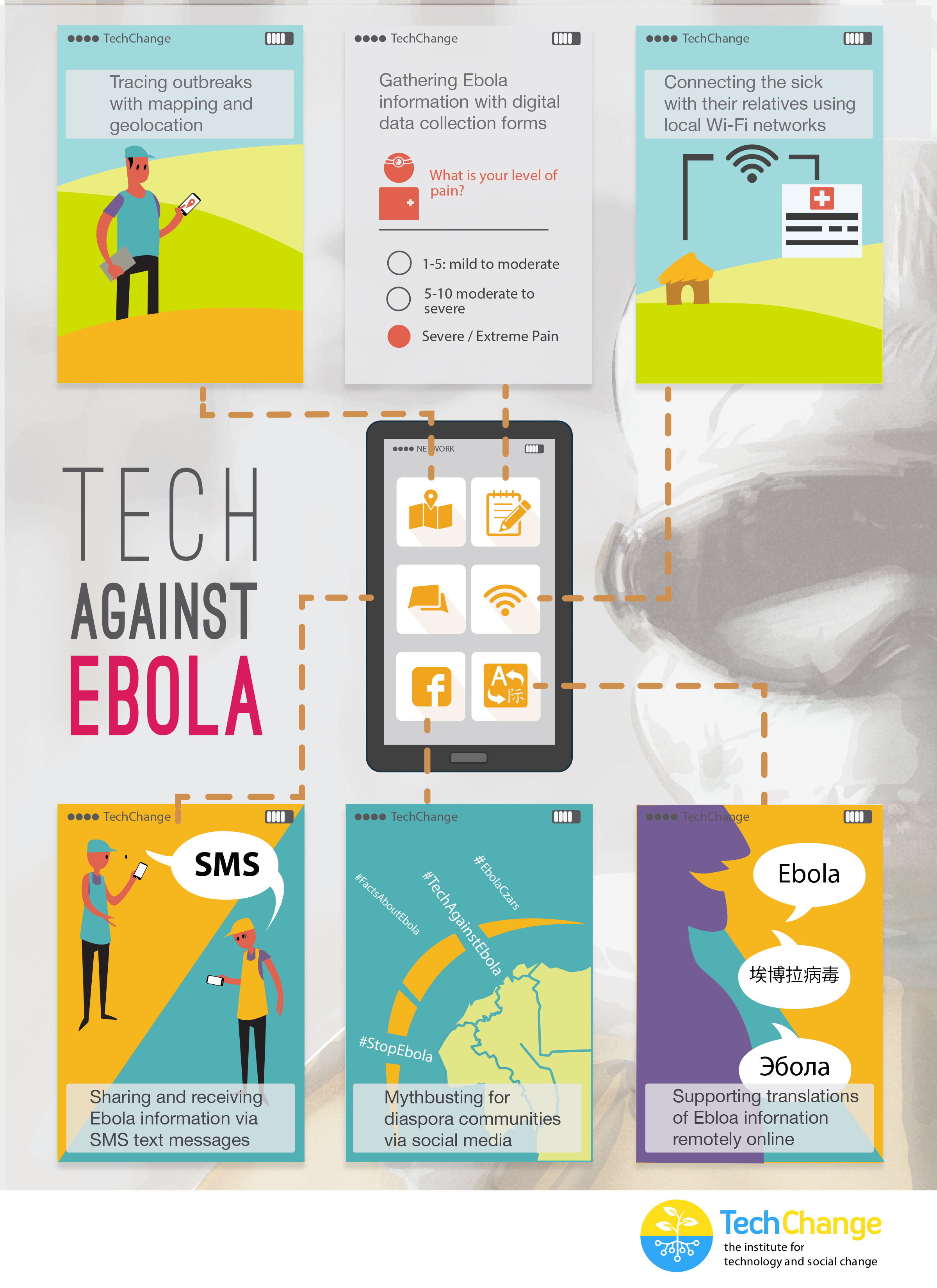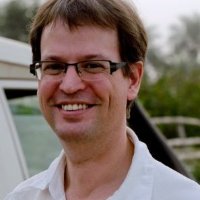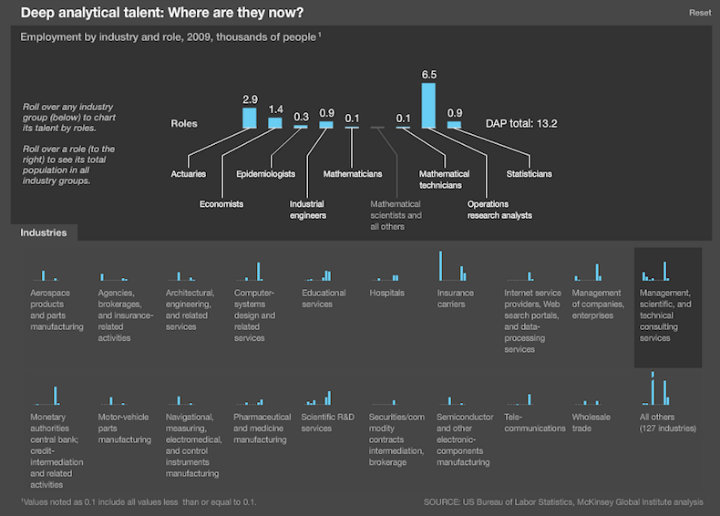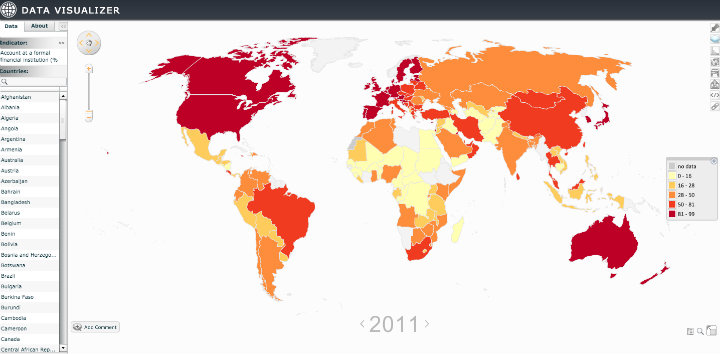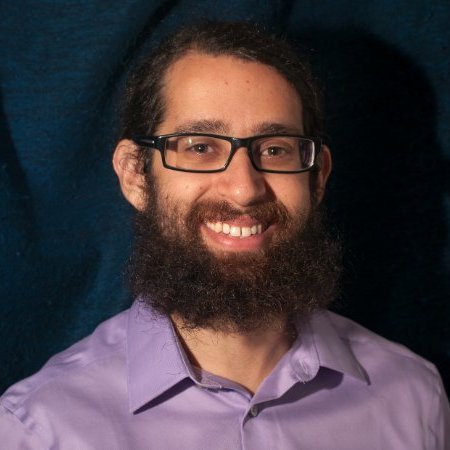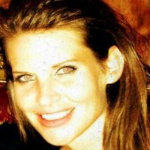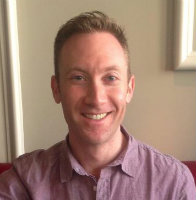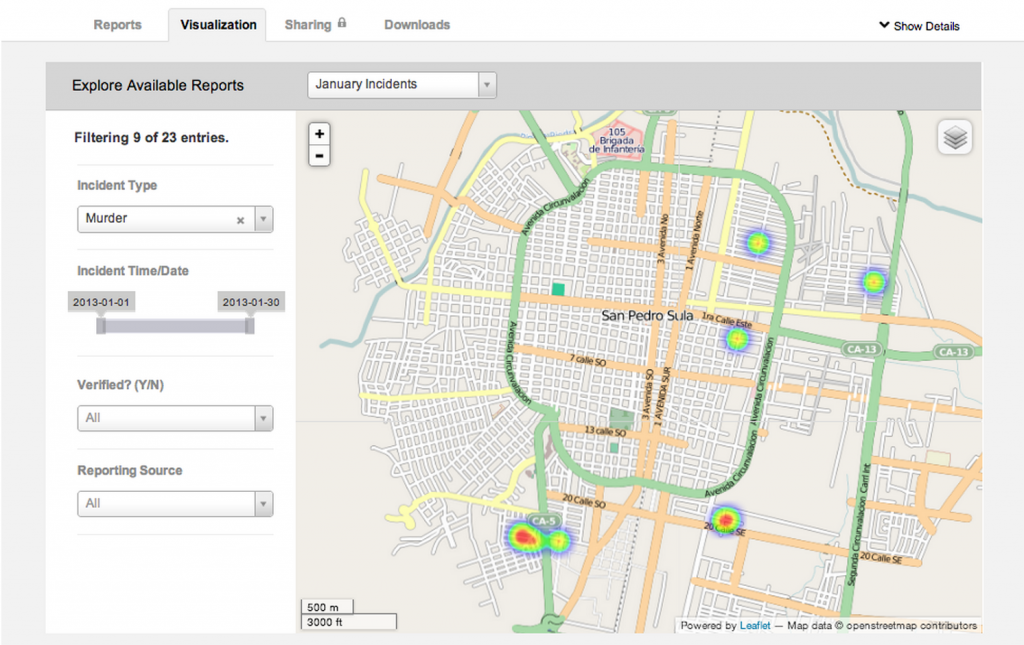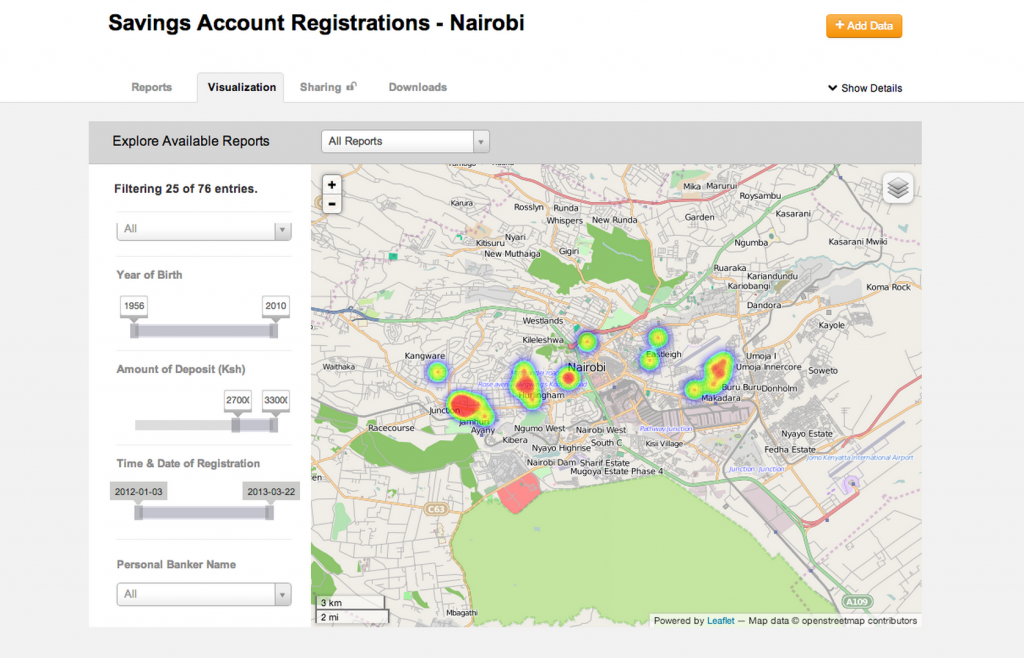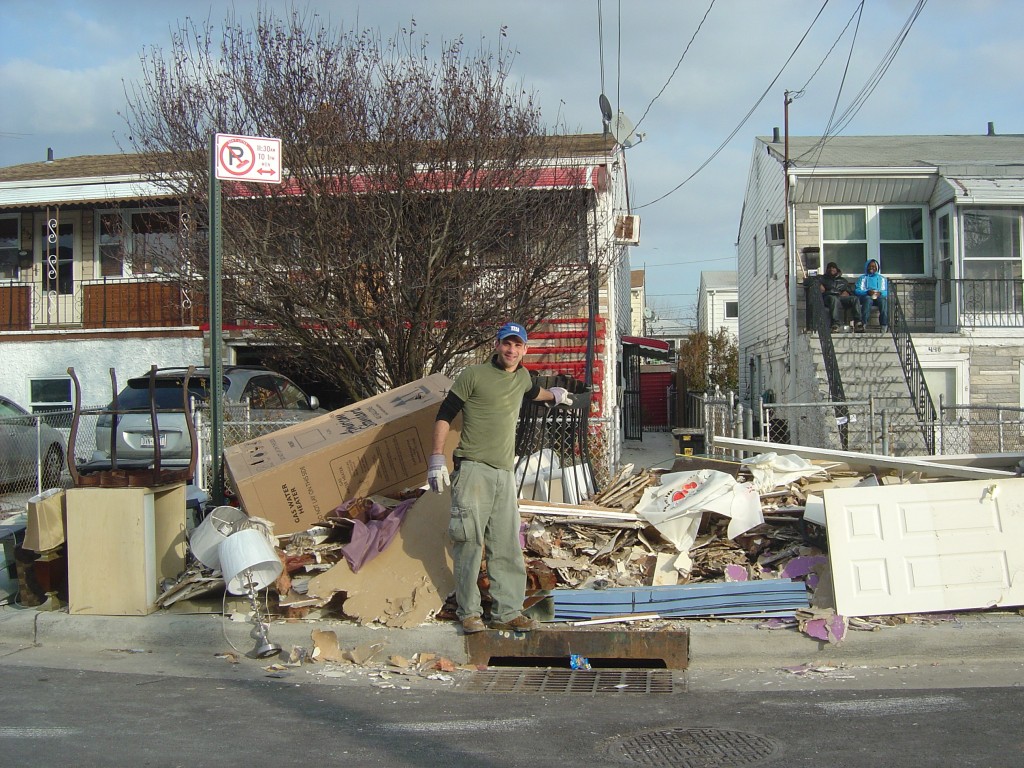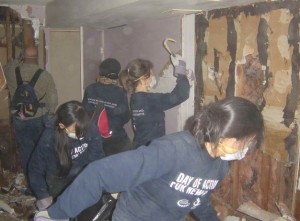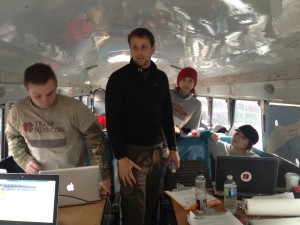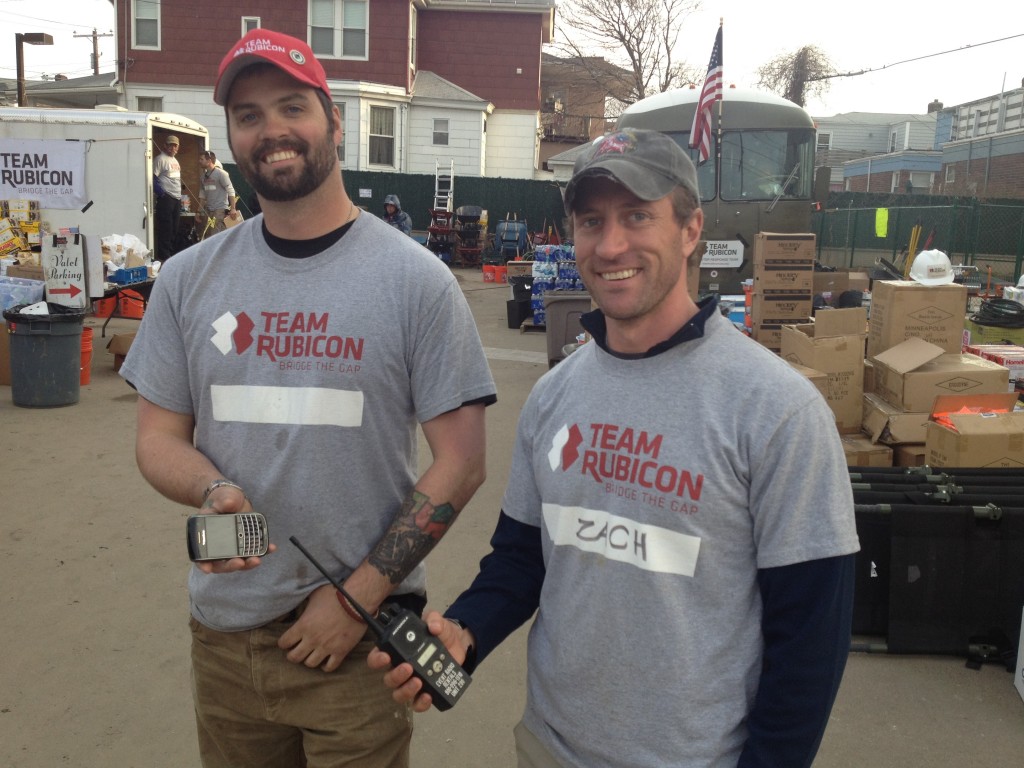On September 25 and 26, over 200 development practitioners and technologists filled FHI 360’s conference rooms and hallways in Washington D.C. to discuss the intersection between technology and monitoring and evaluation (M&E). Some of the conference attendees included participants and guest experts in TechChange’s ongoing online course on Tech for M&E and it was great meeting so many these online course participants in person and offline.
Supported by the Rockefeller Foundation, GSMA, and FHI 360, the M&E Tech Conference was a two-day conference held in D.C. (followed by another one event in New York) to discuss the emerging role of technology in M&E and its implications to everyone involved in the international development industry. The release of the discussion paper, Emerging Opportunities: Monitoring and Evaluation in a Tech-Enabled World kicked off the first panel, followed by two days of great panel discussions and engaging break-out sessions. The event also featured a panel facilitated by TechChange online course facilitator, Kendra Keith on “What’s Next in Visualizing Data for Better Decision Making?” and a lightning talk on ‘How to Use APIs for Real-Time M&E’ that I presented.
In case you didn’t make it to the D.C. M&E Tech conference, here are a few key takeaways from the event.
1. Technology is not a substitute for good M&E methodologies
One of the panelists perfectly summed up the current state of technology in M&E from a technology perspective: it is not always clear why the M [monitoring] is associated with the E [evaluation]. While technology has made data collection and reporting easy, making sense of the data and how it affects programming still requires newer tools and M&E methodologies.
Good M&E requires capturing and analyzing both quantitative and qualitative data. While there are emerging M&E tools (e.g., SenseMaker) and techniques (e.g., natural language processing), cost and expertise continue to make capturing and analyzing qualitative data difficult. As mixed methods–using both qualitative and quantitative data — are discussed more in an M&E setting, practitioners still have a great deal of work to do.
Kenneth M. Chomitz, Kerry Bruce (a guest speaker for TechChange’s Tech for M&E course), and Maliha Khan discuss the current state of Tech for M&E
Mobile phones have been a hot topic in development, but one of the lightning talks revealed a surprising fact: Mobile surveys are not as effective as we think they are. The average response rate for surveys conducted in-person was 77% compared to 1% for mobile phone surveys. While the comparison may not be fair, it is worth noting that the introduction of any technology also requires M&E.
2. Technology introduces new data issues to M&E regarding responsibility, security, and selectivity biases
During the first panel, one of the panelists mentioned that the next “scandal” in development will be about revealing sensitive data. While not a new topic in development, data responsibility becomes increasingly important with the introduction of technology. Unfortunately, data security was primarily relegated as a panel (Whose Data? Whose Privacy?) and a shout out as one of the 9 Principles for Digital Development. This panel also marked the release of the Responsible Development Data Guide, a resource I co-authored, that focuses on protecting digital data and beneficiary privacy in international development.
Linda Raftree (a regular TechChange guest expert) and Michael Bamberger lead a break-out session discussing the emerging opportunities and challenges of using ICTs for M&E
Another common problem that arises with introducing technology to M&E is selectivity bias. Digital surveys tend to be limited to digitally literate populations with access to technology. Yet, even digital literacy and access to technology doesn’t guarantee a truthful response. For example, the panel on data privacy shared that women often didn’t respond truthfully to mobile surveys because their husbands or family members often monitored their personal phones.
Technology also biases researchers and evaluators towards quantitative methods and data. Qualitative data collection, analysis, and visualization software has not kept pace with tools for quantitative data.
3. Data matters more than ever in development
Recognizing the challenges and opportunities technology brings to M&E, the event included many conversations on data. There were break-out sessions on topics like data visualization, leveraging big data, how mobile phones can help in M&E, data security issues, and more.
Data visualization
The data visualization panel showed that there are a lot of new techniques to visualize data. Network visualization is a fantastic way to view a system (e.g., an organization or a program). It’s a simpler way to see where multiple links connect and understand where they need to be strengthened. Mapping allows for easier analysis of aid efficacy. Development Gateway presented their Aid Management Platform with its mapping feature that is aimed at governments in countries with development programs. In particular, they highlighted the success in Malawi and their public facing site with an interactive map. Excel–the tool that most people have and use to create pie charts–can be used to create some outstanding visualizations.
Neal Lesh of Dimagi presents trends in mHealth systems from over 175 CommCare projects
Open data
Most importantly, we are all looking forward to the day when open data is the standard. Many organizations spend a lot of time and money collecting the same data. If open data was the standard, available data can be used as baselines and potentially show impact after a project. Open data can also push for data structure standards (e.g., IATI) and allow data to be decentralized with application programming interfaces (APIs) connecting the data sources.
The challenges technology introduces to monitoring and evaluation, like data security and access, are topics we are also currently discussing in our Tech for M&E online course with a class of 100 students from all over the world. Due to popular demand, we are offering the next Tech for M&E course in January 2015. If you are interested in joining the discussion, apply before November 1 to get $100 off the full price of the course during this early bird discount period for the next Tech for M&E course.
If you did attend the event, what did you take away from the conference? Did you attend the conference in New York? Share some of your highlights and insights!

